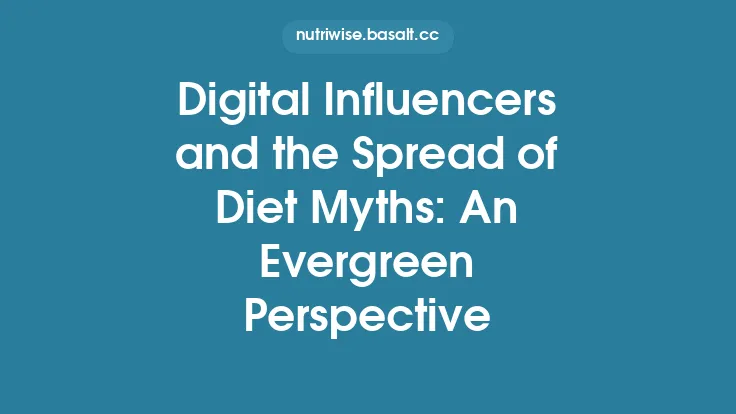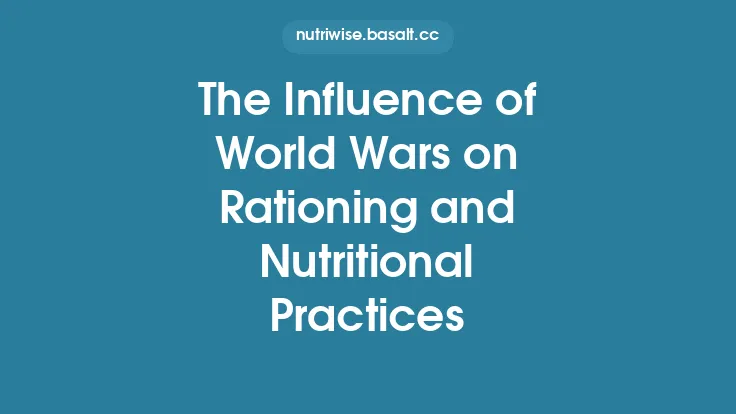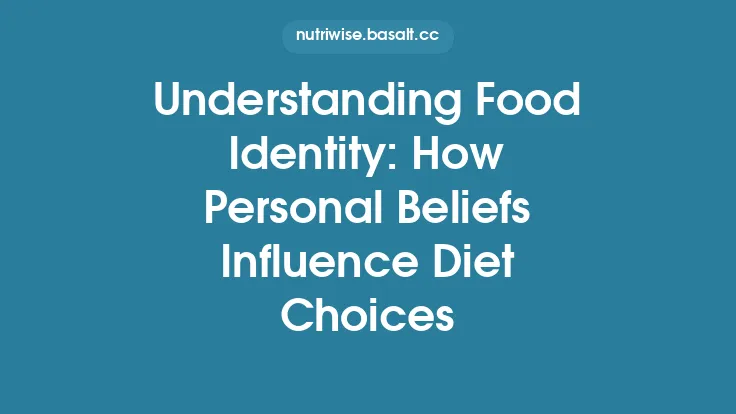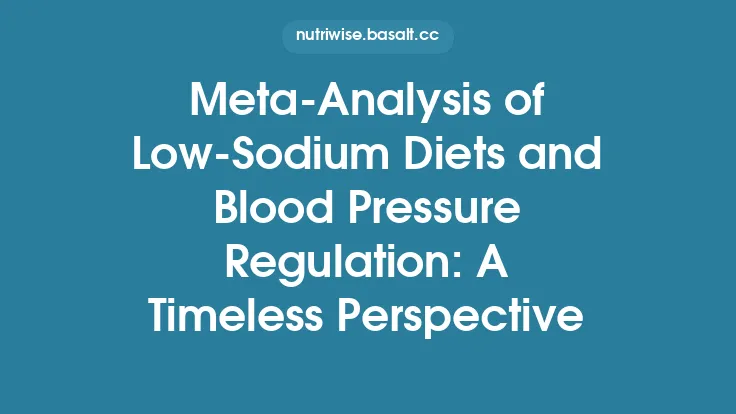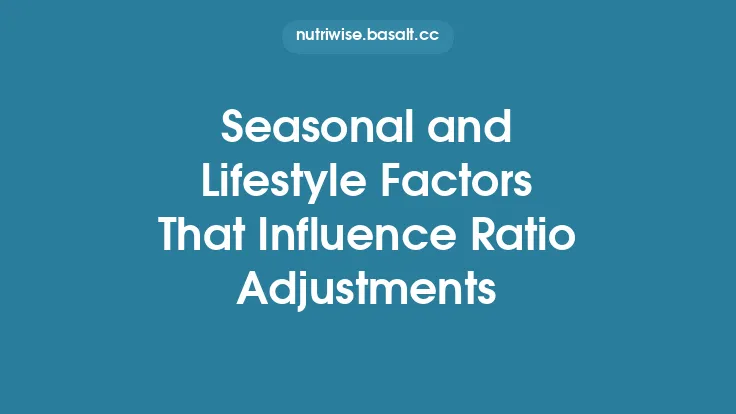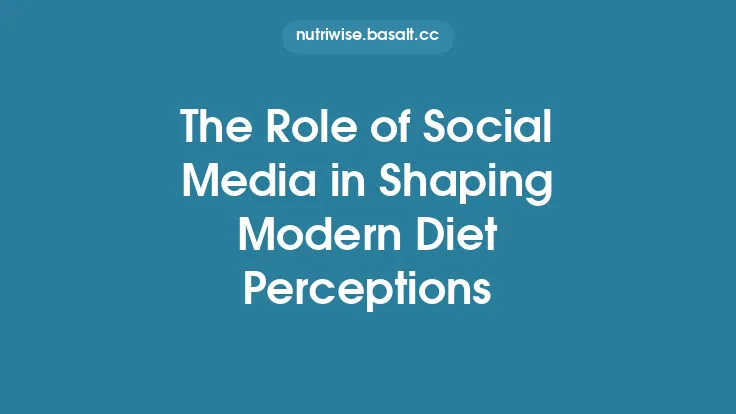Adopting a new way of eating rarely happens in a vacuum. From family dinner tables to Instagram feeds, the choices we make about food are constantly being observed, discussed, and evaluated by the people around us. When a particular diet gains traction—whether it is a low‑carb regimen, a plant‑based lifestyle, or an intermittent‑fasting schedule—social influence and peer pressure often serve as the invisible hand that nudges individuals toward (or away from) participation. Understanding how these social forces operate is essential for anyone seeking to make an informed dietary decision, for health professionals aiming to guide patients, and for policymakers tasked with shaping public‑health campaigns.
Theoretical Foundations of Social Influence in Dietary Choices
Social influence refers to the processes by which individuals’ attitudes, beliefs, or behaviors are shaped by the presence or actions of others. Classic social‑psychological frameworks that remain relevant to diet adoption include:
| Theory | Core Principle | Relevance to Diet Trends |
|---|---|---|
| Social Identity Theory | People derive part of their self‑concept from group memberships. | Joining a “vegan community” or a “keto tribe” can reinforce adherence because the diet becomes a marker of group identity. |
| Diffusion of Innovations (Rogers) | Innovations spread through a population via communication channels, following a predictable adoption curve (innovators → early adopters → early majority → late majority → laggards). | Diets are treated as innovations; early adopters (often health professionals or fitness influencers) accelerate diffusion through visible success stories. |
| Social Norms Theory | Perceived norms (what is typical or approved) guide behavior. | If an individual believes that “most of my friends eat low‑carb meals,” they are more likely to conform to that norm. |
| Social Learning Theory (Bandura) | Behaviors are acquired by observing and imitating others, especially when the model’s outcomes appear rewarding. | Watching a peer lose weight on a plant‑based diet can motivate imitation, even without explicit instruction. |
These theories collectively explain why a diet that might initially appear as a personal health choice can quickly become a socially reinforced practice.
Normative vs. Informational Influence in Diet Adoption
Two distinct pathways channel social influence:
- Normative Influence – The desire to be accepted or avoid social disapproval.
*Example*: A college student starts eating a “clean‑eating” diet because their roommate constantly critiques junk‑food choices, and the student wishes to maintain harmony.
- Informational Influence – The reliance on others as a source of credible information, especially under uncertainty.
*Example*: An individual adopts intermittent fasting after reading multiple testimonials from respected nutritionists on a professional forum, interpreting the consensus as evidence of efficacy.
Both mechanisms often operate simultaneously. In the early stages of a diet’s popularity, informational influence may dominate as people seek data about safety and outcomes. As the diet becomes more mainstream, normative pressure—through visible social cues such as shared meals, hashtags, or group challenges—takes on a larger role.
Role of Social Networks and Peer Groups
Structural Features that Amplify Influence
- Density: In tightly knit networks (e.g., close‑friend circles), information circulates rapidly, creating strong normative pressure.
- Centrality: Individuals occupying central positions (high degree or betweenness centrality) act as “hubs” that can broadcast diet‑related content to many others.
- Homophily: People tend to connect with others who share similar health interests, reinforcing echo chambers that magnify specific diet narratives.
Empirical Illustration
A longitudinal study of university students (N = 1,200) tracked dietary changes over two academic years. Using social‑network analysis, researchers found that students whose best friends adopted a plant‑based diet were 2.8 times more likely to transition themselves, independent of prior health knowledge. The effect was strongest when the friend held a high centrality score, indicating that influence spreads not just through direct ties but also through the friend’s broader network.
Influence of Digital Communities and Social Media Platforms
The digital realm has transformed the speed and scale of diet diffusion:
- Algorithmic Amplification: Platforms such as TikTok and Instagram prioritize content with high engagement, often surfacing dramatic before‑and‑after transformations that act as powerful social proof.
- Hashtag Communities: Tags like #KetoLife or #VeganForHealth aggregate millions of posts, creating a sense of collective participation.
- Micro‑Influencers: Users with modest followings (5k–50k) often enjoy higher perceived authenticity, making their diet recommendations especially persuasive within niche communities.
Case Study: The Rise of “Whole30”
Within 18 months of its launch, the Whole30 program amassed over 2.5 million mentions on Instagram. Network‑mapping of the hashtag revealed a core cluster of fitness coaches and nutritionists who posted daily meal plans and progress photos. Their frequent posting cadence generated a “visibility cascade,” where followers repeatedly encountered the diet, reinforcing both informational and normative cues.
Opinion Leaders, Influencers, and the “Diet Celebrity” Effect
Opinion leaders are individuals who are trusted, knowledgeable, and socially visible. In the context of diet trends, they can be:
- Clinical Experts (e.g., registered dietitians, physicians) who lend scientific credibility.
- Fitness Professionals who demonstrate performance benefits.
- Celebrity Figures whose lifestyle choices are widely reported.
The “diet celebrity” effect operates through a combination of source credibility (expertise, trustworthiness) and source attractiveness (likability, aspirational status). When a celebrity publicly adopts a diet, followers often experience a halo effect, assuming the diet is safe and effective because of the celebrity’s perceived success in other domains (e.g., acting, sports).
Mechanisms of Conformity and Compliance in Food Practices
- Asch‑style Conformity: Even when individuals privately doubt a diet’s efficacy, they may outwardly endorse it to align with a majority view, especially in group settings such as diet‑support meetings.
- Foot‑in‑the‑Door Technique: Small initial commitments (e.g., trying a “meat‑free Monday”) increase the likelihood of larger subsequent commitments (full vegetarianism).
- Social Reinforcement: Positive feedback (likes, comments, praise) for posting diet‑related content strengthens the behavior, while negative feedback can deter deviation.
Social Norms Marketing and Its Application to Diet Promotion
Social norms marketing leverages the principle that people adjust behavior to align with perceived norms. Effective campaigns typically:
- Identify Accurate Descriptive Norms (e.g., “70 % of adults in your city eat at least five servings of vegetables daily”).
- Communicate Injunctive Norms (e.g., “Your peers approve of balanced eating”).
- Use Credible Messengers (local community leaders, peer groups).
When applied to diet trends, such messaging can counteract misinformation by highlighting realistic, health‑promoting eating patterns rather than extreme fad diets.
Empirical Evidence: Key Studies on Peer Pressure and Diet Uptake
| Study | Design | Main Findings |
|---|---|---|
| Miller et al., 2021 (US college cohort) | Randomized exposure to peer‑generated diet posts vs. neutral content | Participants exposed to peer posts were 45 % more likely to try a low‑carb diet within 4 weeks. |
| Kwon & Lee, 2022 (South Korean adults) | Social‑network analysis of KakaoTalk groups | Central members who endorsed a plant‑based diet increased group‑wide adoption by 3.2 % per month. |
| Patel et al., 2023 (meta‑analysis, 27 studies) | Systematic review of conformity effects on eating behavior | Overall effect size d = 0.68, indicating a moderate to strong influence of peer norms on food choices. |
| González et al., 2024 (longitudinal, 5‑year) | Tracking of intermittent fasting adoption among office workers | Peer‑pressure scores predicted adherence trajectories more robustly than baseline health literacy (β = 0.41 vs. 0.22). |
These studies collectively demonstrate that peer influence is a robust predictor of both initial diet adoption and sustained adherence.
Moderating Factors: Demographics, Cultural Context, and Personality Traits
- Age: Adolescents and young adults are particularly susceptible to normative pressure due to heightened concern for social acceptance.
- Gender: Women often experience stronger appearance‑related normative cues, influencing adoption of diets promising aesthetic outcomes.
- Cultural Context: Collectivist societies (e.g., many Asian cultures) may exhibit higher conformity to family‑driven dietary norms, whereas individualist cultures may respond more to influencer‑driven trends.
- Personality: High scores on agreeableness and social conformity scales correlate with greater susceptibility to peer pressure, while high openness may predispose individuals to experiment with novel diets regardless of peer endorsement.
Potential Risks of Uncritical Social Influence
- Nutritional Imbalance: Adoption of extreme diets without professional guidance can lead to deficiencies (e.g., micronutrient shortfalls in strict keto).
- Psychological Strain: Constant comparison to peers’ “ideal” diet outcomes may foster anxiety or reduced self‑esteem.
- Misinformation Propagation: Peer‑shared anecdotes often lack scientific validation, perpetuating myths (e.g., “detox diets cleanse the body”).
- Social Exclusion: Individuals who resist prevailing diet norms may experience marginalization within their social circles.
Strategies for Individuals to Navigate Peer Pressure
- Critical Evaluation: Verify claims through reputable sources (peer‑reviewed journals, registered dietitians) before adopting a diet.
- Boundary Setting: Communicate personal dietary goals to friends and family, requesting respectful dialogue rather than judgment.
- Diversify Information Sources: Balance peer anecdotes with expert guidance to avoid echo‑chamber effects.
- Gradual Implementation: Use incremental changes (e.g., “flexitarian” approach) to test compatibility without full commitment.
- Self‑Monitoring: Track physiological markers (energy levels, blood work) to assess whether the diet aligns with personal health needs.
Implications for Public Health Messaging and Policy
- Leverage Positive Norms: Campaigns should highlight realistic, health‑promoting eating patterns that are already common in the target population.
- Engage Community Leaders: Partner with trusted local figures (e.g., school nurses, community coaches) to disseminate balanced diet information.
- Regulate Influencer Content: Encourage platforms to require disclosure of qualifications when promoting diet products, reducing the spread of unverified claims.
- Support Peer‑Based Interventions: Structured group programs (e.g., community cooking classes) can harness normative influence while providing professional oversight.
Future Research Directions
- Longitudinal Network Modeling: Applying dynamic social‑network analysis to capture how diet adoption cascades over time across both offline and online ties.
- Cross‑Cultural Comparative Studies: Examining how collectivist versus individualist cultural frameworks modulate the strength of normative versus informational influence.
- Neurobiological Correlates: Investigating brain regions (e.g., ventral striatum) activated during socially reinforced food choices to better understand reward mechanisms.
- Intervention Trials: Testing the efficacy of “norm‑correcting” messages (e.g., revealing that a majority actually eat balanced meals) in reducing uptake of extreme fad diets.
By dissecting the mechanisms through which peers, opinion leaders, and digital communities shape dietary decisions, we gain a clearer picture of why certain diets surge in popularity and how individuals can maintain agency amid pervasive social cues. Recognizing the power of social influence—while applying critical appraisal and evidence‑based guidance—offers a balanced pathway for navigating the ever‑evolving landscape of diet trends.
